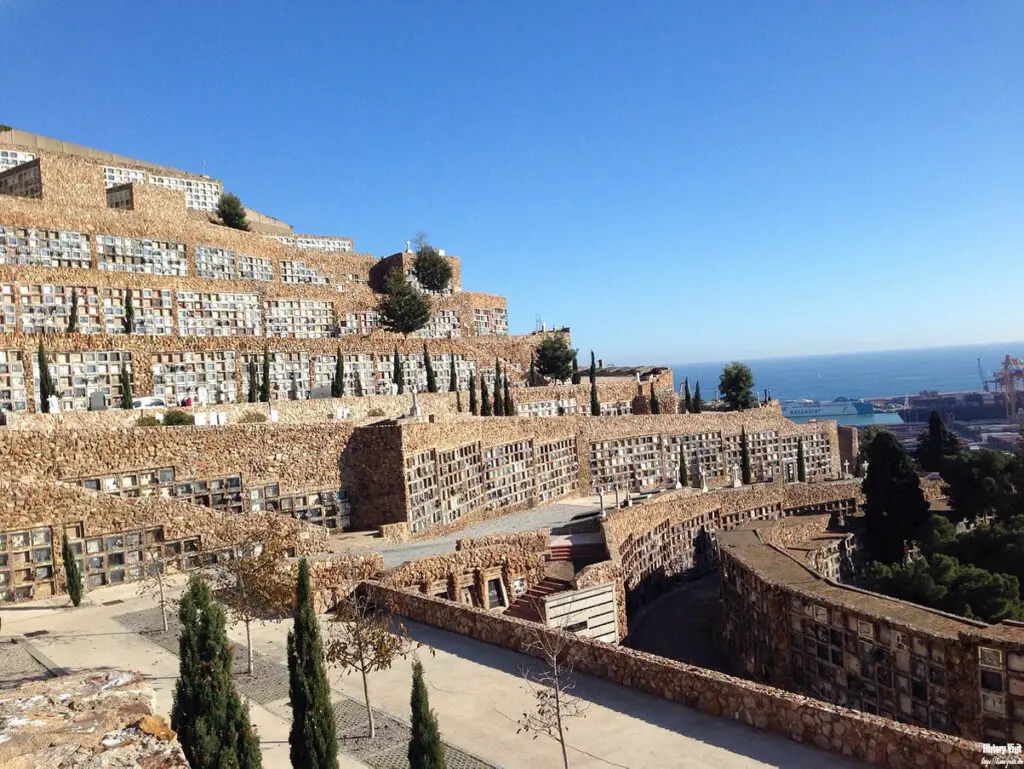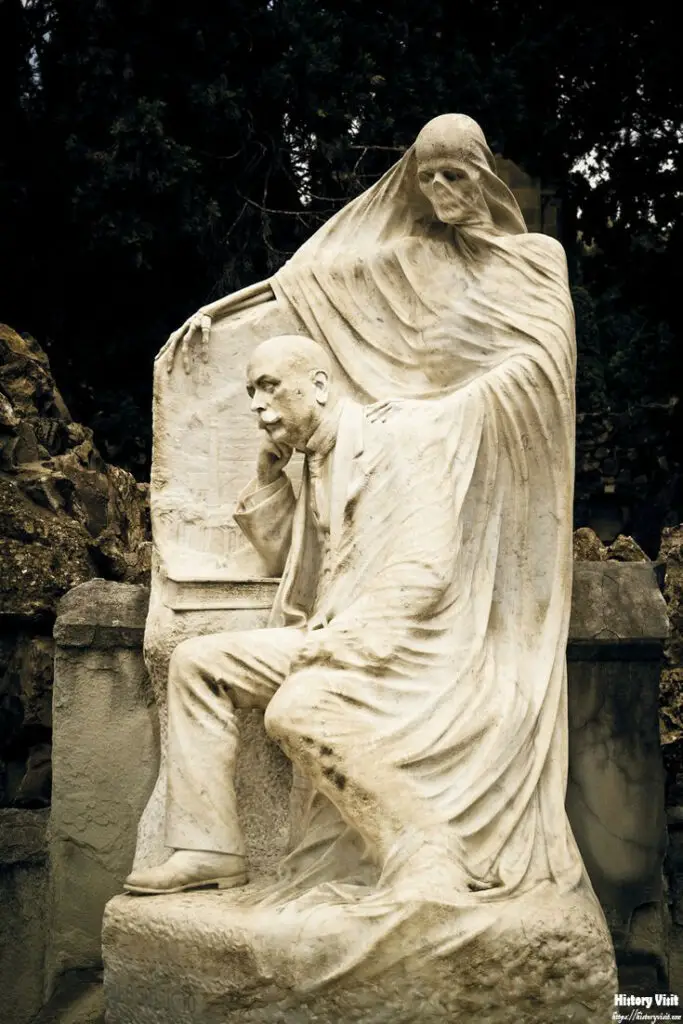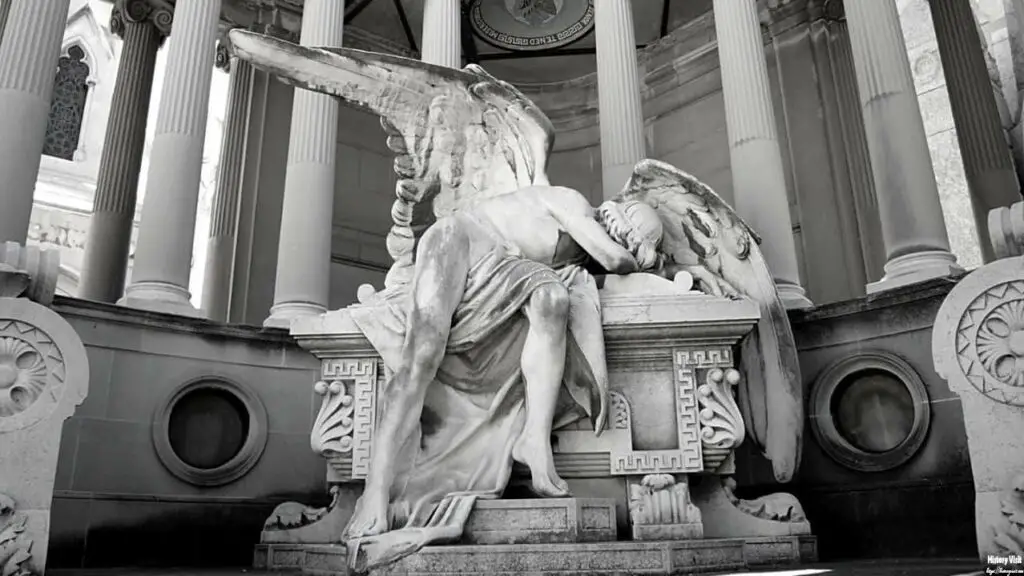Cementiri de Montjuïc Memorial Park: A Historical and Cultural Gem in Barcelona

Introduction
Nestled on the slopes of Montjuïc hill in Barcelona, Spain, lies a place of profound historical significance and artistic beauty: the Cementiri de Montjuïc Memorial Park. More than just a cemetery, this sprawling memorial park serves as a testament to the city’s rich cultural heritage and provides a tranquil oasis amidst the bustling metropolis. From its inception in 1883 to accommodate Barcelona’s growing population to its present-day status as a revered cultural landmark, Cementiri de Montjuïc has evolved into a sanctuary where history, art, and remembrance converge.
As visitors traverse the terraced pathways of the cemetery, they are greeted by a panorama of architectural marvels, exquisite sculptures, and lush botanical gardens. Each mausoleum, tomb, and monument tells a story, reflecting the diverse cultural influences and artistic styles that have shaped Barcelona over the centuries. Cementiri de Montjuïc is not merely a burial ground but a living museum, where the past is preserved and celebrated, offering visitors a profound and contemplative journey through the annals of history.
A Brief History

The Cementiri de Montjuïc, also known as the Montjuïc Cemetery, was inaugurated in 1883 to accommodate the growing population of Barcelona. As the city’s population increased rapidly during the late 19th century, the need for a new burial ground became evident. Designed by architect Leandre Albareda, the cemetery was part of a broader urban development plan to modernize the city. Its location on Montjuïc hill was chosen for its serene environment, offering a peaceful final resting place with stunning views of the Mediterranean Sea.
The cemetery’s opening marked a significant moment in Barcelona’s urban development, representing a shift towards more modern, organized, and sanitary burial practices. Montjuïc’s terraced design was innovative, utilizing the natural contours of the hillside to create a layout that was both functional and aesthetically pleasing. Over the years, the cemetery expanded to accommodate more burials, growing into the sprawling memorial park it is today, spanning over 56 hectares and housing approximately one million burials.
Throughout its history, the cemetery has been a reflection of Barcelona’s evolving social and cultural landscape. It has borne witness to the city’s growth, the impacts of political upheavals, and the changing attitudes towards death and remembrance. Each section of the cemetery tells a different part of this story, from the grand mausoleums of the industrial age to the more modest graves of ordinary citizens.
Today, the Cementiri de Montjuïc remains an important part of Barcelona’s heritage. It serves not only as a burial ground but also as a historical archive and a cultural landmark. The cemetery’s historical significance is underscored by the many notable figures buried there, each contributing to the rich tapestry of the city’s past. Its ongoing use and preservation ensure that it remains a place where history and memory converge.
Architectural Marvels

One of the most striking features of the Cementiri de Montjuïc is its architecture. The cemetery is renowned for its diverse range of funerary art and monuments, which reflect the social status and artistic tastes of different eras. From simple, unadorned graves to elaborate mausoleums, the cemetery offers a visual history of Barcelona’s architectural evolution.
The layout of the cemetery follows the natural contours of Montjuïc hill, creating a terraced design that adds to its aesthetic appeal. This design not only maximizes the use of space but also provides visitors with stunning views of the surrounding landscape and the Mediterranean Sea. Walking through the cemetery, one can see how the architecture integrates with the natural environment, creating a harmonious blend of man-made and natural beauty.
The cemetery is a showcase of Catalan funerary art, with works by some of the most prominent artists and architects of the 19th and 20th centuries. Many of the tombs and mausoleums are adorned with intricate sculptures and reliefs, showcasing the skill and creativity of these artists. Art Nouveau and Modernisme styles are particularly well represented, with their characteristic use of organic forms, elaborate decorations, and symbolic motifs.
Among the architectural highlights are the mausoleums of wealthy industrialist families, which often resemble small chapels or even miniature palaces. These grand structures contrast with the more modest graves of ordinary citizens, highlighting the social stratification of the period. Despite these differences, each grave contributes to the overall beauty and historical richness of the cemetery, making it a fascinating place to explore.
Sculptures in the Cemetery

The Cementiri de Montjuïc is particularly renowned for its exquisite sculptures, which transform the cemetery into an open-air museum of funerary art. These sculptures range from classical to avant-garde, showcasing the talents of some of Catalonia’s most skilled artists. Each piece adds to the cemetery’s unique character, blending artistic expression with themes of mortality and remembrance.

Modernist Masterpieces: The influence of Modernisme is evident in many of the cemetery’s sculptures. One notable example is the tomb of Francesc Soler i Rovirosa, designed by Josep Llimona, a leading sculptor of the Modernisme movement. His works often feature delicate and emotional portrayals of human figures, capturing the sorrow and serenity associated with mourning. Llimona’s sculptures are characterized by their detailed craftsmanship and emotional depth, making them some of the most moving pieces in the cemetery.

Angels and Guardians: Angels are a recurring motif in the cemetery, symbolizing protection and the transition between life and death. The Angel of Death by Enric Clarasó is a striking sculpture that stands out for its dramatic expression and intricate details. Another notable piece is the sculpture of an angel on the grave of Jaume Mora, crafted by Josep Campeny, which exudes a sense of peace and guardianship. These angelic figures provide comfort and solace to the bereaved, embodying the hope of an afterlife.

Symbolic Figures: Many sculptures in the cemetery incorporate symbolic elements that reflect themes of eternity, resurrection, and the soul’s journey. The sculpture of the Pietà on the grave of the López family, created by Frederic Marès, is a poignant depiction of the Virgin Mary cradling the body of Jesus, symbolizing grief and maternal love. Other symbolic sculptures include representations of weeping women, eternal flames, and broken columns, each carrying deep meaning and contributing to the cemetery’s contemplative atmosphere.
Abstract and Contemporary Works: In addition to traditional and modernist sculptures, the cemetery also features contemporary pieces that offer a modern take on funerary art. These sculptures often use abstract forms and materials to convey deeper philosophical and existential themes, blending seamlessly with the historic and natural environment of the cemetery. Contemporary works add a dynamic and evolving aspect to the cemetery, ensuring that it remains a living part of Barcelona’s artistic heritage.
Notable Burials
Cementiri de Montjuïc is the final resting place of many prominent figures in Catalan and Spanish history. These individuals have made significant contributions to the cultural, political, and social fabric of the region, and their graves are visited by many who come to pay their respects and reflect on their legacies.
Joan Miró: One of the most famous burials in the cemetery is that of Joan Miró, the renowned surrealist painter and sculptor. Miró’s works have had a profound impact on modern art, and his grave is a site of pilgrimage for art enthusiasts from around the world. His final resting place is marked by a simple yet elegant gravestone, reflecting the understated beauty that characterizes much of his work.
Lluís Companys: Another significant figure buried at Montjuïc is Lluís Companys, the President of Catalonia during the Spanish Civil War. Companys was executed in 1940 by the Franco regime, and his grave has become a symbol of resistance and Catalan identity. Each year, on the anniversary of his death, people gather at his grave to honor his memory and celebrate his contributions to the fight for democracy and autonomy in Catalonia.
Ildefons Cerdà: The urban planner responsible for the design of Barcelona’s Eixample district, Ildefons Cerdà, is also buried in the cemetery. Cerdà’s innovative grid plan transformed Barcelona into a modern metropolis, and his work continues to influence urban planning worldwide. His grave is a tribute to his vision and enduring impact on the city’s development.
These notable burials, along with many others, make the cemetery a place of historical significance and a repository of the collective memory of the city. Visitors can learn about the lives and achievements of these individuals, gaining insight into the history and culture of Barcelona through the stories of those who shaped it.
Cultural and Historical Significance

Beyond its role as a cemetery, Cementiri de Montjuïc serves as a cultural and historical landmark. The cemetery reflects the social, political, and cultural changes that have shaped Barcelona over the centuries. It is a place where the past is preserved and remembered, offering visitors a glimpse into the city’s rich and complex history.
The cemetery also hosts guided tours and cultural events that aim to educate visitors about its historical and artistic importance. These tours provide detailed information about the architecture, notable burials, and the various artistic styles represented in the cemetery. Cultural events, such as concerts and exhibitions, are held in the cemetery, transforming it into a space for community engagement and cultural expression.

One of the most notable features is the Fossar de la Pedrera, a mass grave where thousands of victims of the Franco regime were buried. This area of the cemetery stands as a somber reminder of Spain’s turbulent past and is a place for reflection and remembrance. The Fossar de la Pedrera has become a symbol of the fight for justice and human rights, drawing visitors who come to honor the memory of those who suffered during the dictatorship.
The cemetery’s ongoing use and preservation efforts ensure that it remains an integral part of Barcelona’s cultural landscape. Initiatives to maintain and restore the cemetery’s monuments and sculptures help to preserve its historical and artistic heritage for future generations. These efforts underscore the importance of the Cementiri de Montjuïc as a living museum, where history, art, and memory converge.
A Place of Tranquility and Reflection

Visiting Cementiri de Montjuïc offers a unique experience, combining the solemnity of a burial ground with the beauty of an open-air museum. The peaceful environment, enriched with history and art, provides a space for contemplation away from the hustle and bustle of the city. The cemetery’s serene atmosphere is enhanced by its location on Montjuïc hill, offering stunning views of the surrounding landscape and the Mediterranean Sea.
The cemetery is also a botanical haven, with a variety of trees and plants that add to its tranquil environment. Cypress trees, olive trees, and Mediterranean shrubs are among the many species that contribute to the cemetery’s lush and serene landscape. The presence of these plants not only enhances the beauty of the cemetery but also creates a peaceful and contemplative atmosphere for visitors.
The well-maintained pathways and panoramic views make it a pleasant place for a leisurely walk, where visitors can appreciate the harmony between nature and monumental art. Walking through the cemetery, one can discover hidden corners, beautiful sculptures, and historical graves, each telling a unique story. The combination of natural beauty and artistic expression makes the Cementiri de Montjuïc a truly unique and memorable place.
For those seeking a moment of reflection or a deeper connection with Barcelona’s history, the cemetery offers numerous spots for quiet contemplation. Benches placed along the pathways provide opportunities to sit and reflect, surrounded by the peaceful sounds of nature and the poignant beauty of the cemetery’s art and architecture. Whether visiting to pay respects, explore the artistic heritage, or simply enjoy the tranquil environment, Cementiri de Montjuïc provides a profound and enriching experience.
Conclusion
Cementiri de Montjuïc Memorial Park is more than just a cemetery; it is a testament to Barcelona’s rich history and cultural heritage. Its architectural beauty, historical significance, and tranquil environment make it a must-visit destination for anyone interested in the city’s past and its artistic legacy. As a place of rest, remembrance, and reflection, Cementiri de Montjuïc continues to be an integral part of Barcelona’s cultural landscape. Whether you are a history buff, an art enthusiast, or simply someone seeking a peaceful place to reflect, the Cementiri de Montjuïc offers a unique and enriching experience.


